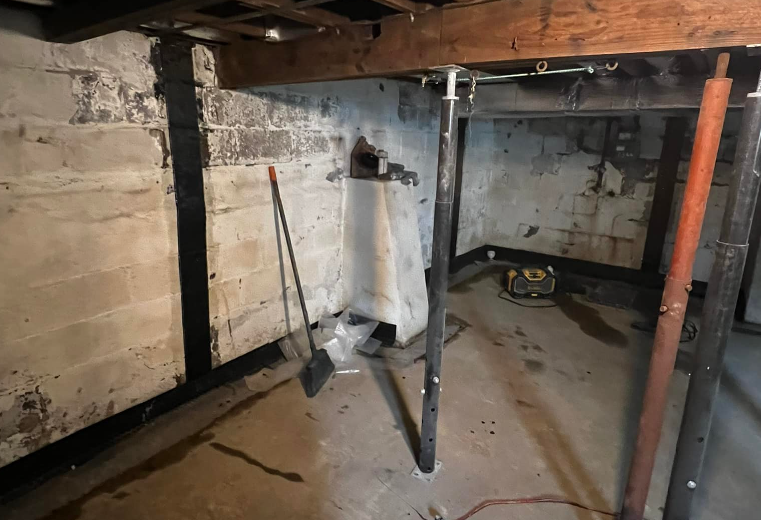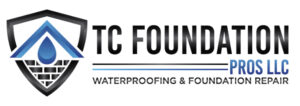From mold growth to structural damage, your crawl space might harbor issues you’re unaware of. Discover how addressing these common crawl space concerns through repair and maintenance can protect your home and improve your overall living environment.
Key Takeaways
- Moisture barriers prevent mold and structural damage.
- Proper ventilation controls humidity and prevents pests.
- Sealing cracks and entry points deter pests.
- Insulation repairs enhance energy efficiency.
- Crawl space repair addresses structural damage promptly.
Excessive Moisture
Excessive moisture in crawl spaces can lead to many problems, ranging from mold growth to structural damage. Water damage is a common consequence of high moisture levels in these areas. Moisture barriers are vital in preventing this issue. These barriers act as protective shields, keeping excess moisture from seeping into the crawl space and causing harm. Installing moisture barriers can effectively mitigate the risk of water damage and its associated problems.
Moisture barriers are designed to create a barrier between the ground and the crawl space, preventing moisture from infiltrating the area. This is fundamental in maintaining the structural integrity of your home. The excess water can seep into the foundation without proper moisture barriers, causing it to weaken over time. This can lead to costly repairs and compromise the stability of your home.
Installing high-quality moisture barriers is imperative to prevent water damage and guarantee the longevity of your crawl space. These barriers protect against moisture and help regulate the temperature and humidity levels in the crawl space.
Mold and Mildew
Addressing mold and mildew growth is vital to maintaining a healthy crawl space environment.
Mold prevention is essential in crawl spaces as these areas have higher humidity levels, creating a perfect breeding ground for mold and mildew. The presence of mold compromises the structural integrity of your home and can lead to health issues for you and your family.
Effective mold prevention starts with controlling moisture levels in the crawl space. Proper ventilation and sealing of any cracks or openings can help reduce moisture build-up.
Additionally, installing a vapor barrier can shield against excess moisture, preventing mold growth.
If mold and mildew have already infested your crawl space, immediate mildew treatment is necessary.
Professional mold remediation services can help eliminate existing mold and prevent its recurrence. They can also assess the extent of the damage and recommend suitable repairs to guarantee a mold-free environment.
Regular inspections and maintenance prevent mold and mildew from reappearing in your crawl space.
Pest Infestation
When it comes to crawl space maintenance, addressing pest infestation is vital.
Pests can cause structural damage, pose health risks, and compromise the integrity of your home.
Understanding prevention methods, recognizing signs of infestation, and implementing effective control measures are essential in safeguarding your crawl space.
Pest Prevention Methods
Effective pest prevention methods are essential to safeguarding your crawl space from potential infestations.
To protect your crawl space from pest intrusions, consider the following prevention techniques:
- Sealing Entry Points: Identify and seal any cracks, crevices, or gaps in the crawl space walls to prevent pests from entering.
- Moisture Control: Since pests are attracted to damp environments, use a dehumidifier or vapor barrier to reduce moisture levels in the crawl space.
- Regular Inspections: Conduct routine inspections to catch pest behavior early and promptly address any signs of infestation.
- Proper Ventilation: Guarantee adequate ventilation in the crawl space to discourage pests from making it their home.
Signs of Infestation
Sealing entry points, monitoring moisture levels, and ensuring proper ventilation are essential to keeping pests out of your crawl space.
Despite these precautions, knowing the signs of infestation is vital to address the issue promptly. Pest infestations in crawl spaces can vary, with common types including rodents, insects, and even mold. Understanding the pest lifecycle can help identify the signs early on.
Rodent infestations often leave behind droppings, ground wires, and shredded materials as telltale signs. Insects may leave trails of droppings, shed skins, or visible nests. Mold infestations usually manifest through a musty odor, visible mold growth, and damp areas.
Regular inspections can help detect these signs before the infestation worsens. If you notice any of these indicators, it’s advisable to consult a professional for appropriate pest control measures.
Effective Pest Control
To effectively control pest infestations in your crawl space, you must employ a combination of preventive measures and targeted solutions.
Identifying the type of pest present is vital for implementing the most effective pest management strategies. Here are some critical steps to help you tackle pest issues in your crawl space:
- Pest Identification: Conduct a thorough inspection to identify the specific pests in your crawl space.
- Moisture Control: Address any moisture issues in the crawl space to prevent attracting pests that thrive in damp environments.
- Sealing Entry Points: Seal off any cracks, crevices, or gaps that pests could use to enter the crawl space.
- Professional Pest Control Services: Consider hiring professional pest control services for an extensive, long-term solution to eradicate pests from your crawl space.
Structural Damage
What are the signs of structural damage in your crawl space?
Structural damage in your crawl space can manifest in various ways, indicating foundation stability issues and overall crawl space maintenance. One common sign of structural damage is sagging or uneven floors above the crawl space. This can be caused by problems such as weakened support beams or foundation settling.
Another indicator of structural damage is visible cracks in the walls or floors of your crawl space. These cracks may start small but can widen over time, pointing to potential foundation stability problems.
Additionally, doors and windows that are difficult to open or close properly could be a sign of structural issues affecting the house’s alignment.
If you notice any signs of structural damage in your crawl space, it’s vital to address them promptly to prevent further damage.
Seeking professional help to assess the extent of the damage and recommend appropriate crawl space repair solutions is essential for maintaining the integrity of your home’s foundation and ensuring its long-term stability.

Insulation Issues
Inspecting the insulation in your crawl space is fundamental for maintaining energy efficiency and preventing moisture-related issues. When it comes to insulation issues, there are a few key aspects to keep in mind:
- Insulation Types: Understanding the insulation materials available for crawl spaces, such as fiberglass, foam board, or spray foam, can help you choose the most suitable option.
- Installation Techniques: Proper installation techniques, like sealing gaps and guaranteeing a continuous barrier, are essential for effective insulation in crawl spaces. Poor installation can lead to energy loss and increased moisture levels.
- Moisture Control: Insulation plays a significant role in moisture control within the crawl space. Choosing moisture-resistant insulation materials and installing vapor barriers can help prevent mold growth and structural damage.
- Ventilation: Proper ventilation is fundamental to guarantee that the insulation functions effectively. Ventilation helps regulate temperature and humidity levels, improving energy efficiency and preventing moisture buildup.
Poor Indoor Air Quality
You may face poor indoor air quality due to airborne pollutants in your crawl space.
To mitigate these pollutants, consider implementing solutions such as improving ventilation and sealing off any sources of contamination.
Additionally, controlling humidity levels can help prevent mold growth and enhance the overall air quality in your home.
Airborne Pollutants Mitigation
Implementing a thorough mitigation strategy is vital to effectively addressing the issue of poor indoor air quality caused by airborne pollutants.
When dealing with air quality concerns in your crawl space, consider the following:
- Ventilation Systems: Guarantee proper ventilation to facilitate air circulation and reduce the concentration of pollutants.
- Air Filtration: Install high-quality air filters to trap contaminants and improve the overall air quality.
- Building Codes Compliance: Adhere to building codes that specify ventilation requirements to safeguard indoor air quality.
- Environmental Impact: Recognize the impact of poor air quality on your health and the environment, emphasizing the significance of mitigation efforts.
Humidity Control Solutions
Controlling humidity levels is essential for maintaining good indoor air quality in your crawl space. To achieve this, ventilation systems should be installed to enhance air circulation. Adequate ventilation helps prevent moisture buildup, which can lead to mold growth and musty odors.
Additionally, moisture barriers play a significant role in humidity control by preventing water vapor from seeping into the crawl space. By sealing off the ground with a moisture barrier, you can reduce the amount of moisture that enters the space, thereby decreasing humidity levels.
Properly managing humidity in your crawl space is essential for preventing structural damage and safeguarding indoor air quality. High humidity levels promote mold growth and attract pests that thrive in damp environments.
Energy Inefficiency
Amidst the myriad of problems that can plague a crawl space, energy inefficiency is one crucial issue that often goes unnoticed. Addressing energy inefficiency in your crawl space is essential for maintaining a comfortable and cost-effective home environment.
Here are some key factors contributing to energy inefficiency in crawl spaces:
- Lack of Insulation: Inadequate insulation in the crawl space allows heat transfer between the ground and your home, leading to increased energy consumption.
- Air Leaks: Unsealed gaps and cracks in crawl space walls and floors can cause air leaks, which can cause your HVAC system to work harder to maintain desired temperatures.
- Moisture Build-Up: Excess moisture in the crawl space can make it harder to heat or cool your home efficiently, as damp air requires more energy to condition.
- Inefficient HVAC Ductwork: Poorly insulated or damaged HVAC ducts in the crawl space can lead to energy loss, reducing the system’s overall efficiency.
To identify energy inefficiencies in your crawl space, consider conducting energy audits and using thermal imaging to pinpoint areas of concern accurately.
To Sum Up
Addressing common crawl space problems through proper repairs is essential for maintaining a healthy and efficient home. TC Foundation Pros LLC reminds homeowners, “An ounce of prevention is worth a pound of cure.” By taking proactive steps to control moisture, prevent mold growth, deter pests, and improve insulation, you can ensure a safe and comfortable living environment while preserving your home’s value over time. Don’t wait until issues escalate—prioritize crawl space repair with TC Foundation Pros LLC today.
